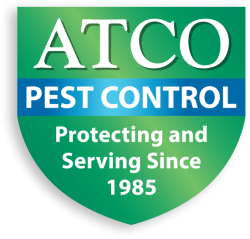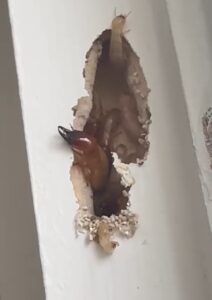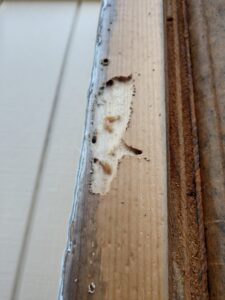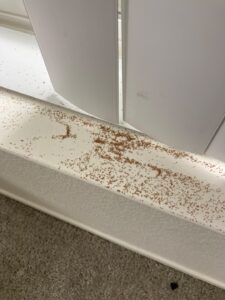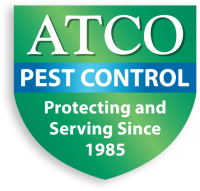Let’s Talk Drywood Termites!
What’s Eating Your House? Let’s Talk Drywood Termites
Let me guess—you’re here because you’ve spotted some suspicious wood dust around your window sills, maybe even a few wings or droppings, and now your stomach’s in knots. Yep, I’ve seen that look on plenty of East Bay homeowners. You start Googling “Pest Control” and wondering if you’re about to fork over your vacation budget to save your baseboards.
Drywood termites are sneaky little suckers. Unlike their subterranean cousins, they don’t need soil. They’ll set up shop in dry wood, inside your home—attic rafters, door frames, even antique furniture. It’s like giving termites the keys to the house and asking them not to redecorate.
I’ve been in pest control in the Bay Area for a long time, and trust me—drywood termites are no joke. But don’t panic. I’ll walk you through what to look for, how they operate, and most importantly, how to kick ‘em out for good.
What Makes Drywood Termites Different?
Here’s the thing: drywood termites don’t behave like other termites. Most folks hear “termite” and think mud tubes, damp soil, and yard infestations. Not these guys.
A few key differences:
-
They don’t need moisture from the ground. That’s wild, right? They get all the moisture they need from the wood they eat.
-
They live inside the wood. No external nests. No trails. Just deep inside your beams, quietly munching away.
-
They leave behind tiny “kick-out” holes and little piles of fecal pellets that look like pepper or sand.
We once treated a craftsman in El Cerrito where the owner thought it was just “dusty wood.” Nope—turns out it was years of termite pellets tucked neatly behind a bookcase. By the time we opened up the wall, the studs were hollow.
Signs You’ve Got a Drywood Termite Problem
I always tell folks: drywood termites aren’t loud houseguests, but they leave clues.
Keep an eye out for:
-
Frass (termite droppings): Looks like sawdust or coffee grounds. Usually found below infested areas.
-
Hollow-sounding wood: Tap around door frames, window sills, baseboards. If it sounds like a drum, get it checked.
-
Discarded wings: Especially near windows or light fixtures.
-
Small holes in wood surfaces: These are “kick-out” holes where they eject frass.
Live in Union City or Richmond? Drywood activity tends to spike in warmer inland areas—places where attics get toasty in summer. We get a lot of calls in July and August when swarming season hits.
How We Treat Drywood Termites at ATCO
There’s no one-size-fits-all, but here’s the truth: catching drywood termites early gives you more treatment options. Wait too long, and it might mean tenting your whole home.
We typically recommend:
🎯 Localized Spot Treatment
Perfect for early-stage or isolated infestations. We drill into the wood and inject a product directly where they live. Super targeted. No tent. No leaving home.
🏠 Whole-Structure Fumigation
If termites have spread, or we can’t access all the galleries, fumigation may be the safest call. Yeah, you’ll need to pack up food and vacate for a couple of days—but it wipes out everything.
🌿 Integrated Pest Management (IPM)
We believe in smart, sustainable pest control. That means:
-
Thorough inspections (inside, out, and up in your attic)
-
Moisture control and sealing cracks
-
Monitoring stations where needed
-
Educating you so termites don’t return
Learn more about our termite treatment options here.
Why Local Matters: Bay Area Homes Aren’t All Built the Same
Honestly? No two houses in the East Bay are exactly alike. I’ve seen 1920s bungalows in Alameda with exposed rafters, and newer builds in Dublin wrapped tight as a drum.
That’s why we tailor every termite treatment. What works for a raised foundation in Berkeley may not cut it in a hillside home in San Rafael.
And being local helps. We know how fog creeps into Mill Valley, how Oakland sunrooms trap heat, and how the salty air near the Richmond Marina can accelerate wood decay—which just makes termite damage worse.
Want to chat with someone who actually knows your neighborhood? Reach out to ATCO Pest Control—we’ve been doing pest control in the Bay Area for over 35 years.
FAQ: Real Questions from Bay Area Homeowners
❓“Can I get drywood termites if my home is brand new?”
You’d be surprised—yes. All it takes is one untreated piece of infested wood during construction. I’ve seen brand-new condos in Walnut Creek need spot treatment within the first year.
❓“Do I have to tent my house?”
Not always. If we catch it early and the infestation is contained, localized treatment might be all you need.
❓“How do I keep them from coming back?”
Preventative inspections are key. We recommend annual checkups, especially if you’ve had termites before. Also: seal cracks, paint exposed wood, and control attic moisture.
Don’t Let Drywood Termites Munch on Your Investment
Look, I get it—talking termites isn’t exactly how you want to spend your weekend. But ignoring drywood termites won’t make them go away. They’ll just keep chewing… and chewing… until you’re staring at a five-figure repair bill.
If you’re worried about what you’re seeing—or just want peace of mind—schedule a free inspection with ATCO. We know Bay Area pests inside and out, and we’re here to help you protect your home.
Let’s kick those drywood squatters to the curb. Pest Control done the ATCO way—local, honest, and thorough.



